The Be Quiet! Dark Rock Pro 5 CPU Cooler Review: When Less Is More
by E. Fylladitakis on January 16, 2024 10:00 AM EST- Posted in
- Cases/Cooling/PSUs
- be quiet!
- CPU cooler
- Air Cooling

Last month we took a look at Be Quiet's Dark Rock Elite, the company's flagship CPU tower air cooler. The RGB LED-equipped cooler proved flashy in more ways than one, but true to its nature as a flagship product, it also carried a $115 price tag to match. Which is certainly not unearned, but it makes the Elite hard to justify when pairing it with more mainstream CPUs, especially as these chips don't throw off the same chart-topping levels of heat as their flagship counterparts.
Recognizing the limited audience for a $100+ cooler, Be Quiet! is also offering what is essentially a downmarket version of that cooler with the Dark Rock Pro 5. Utilizing the same basic heatsink design as the Dark Rock Elite as its base, the Dark Rock Pro 5 cuts back on some of the bells and whistles that are found on the flagship Elite in order to sell at a lower price while still serving as a high-end cooler. Among these changes are getting rid of the RGB lighting, and using simple wire fan mounts in place of the Elite's nifty rails. The end result is that it allows the Dark Rock Pro 5 to hit a notably lower price point of $80, putting it within the budgets of more system builders, and making it a more practical pairing overall with mainstream CPUs.
But perhaps the most important aspect of all is a simple one: cooling performance. What does the Dark Rock Pro 5 give up in cooling performance in order to hit its lower price tag? As we'll see in this review, the answer to that is "surprisingly little," making the Dark Rock Pro 5 a very interesting choice for mid-to-high end CPUs. Particularly for system builders looking for an especially quiet CPU cooler.
| Be Quiet! Dark Rock Pro 5 CPU Cooler Specifications | |||
| Type | Tower Cooler | ||
| Dimensions | 120 x 136 x 168 | ||
| Fans |
1 x 135 mm "Silent Wings" Fan 1 x 120 mm "Silent Wings 4" Fan |
||
| RGB | No | ||
| Supported Sockets | Intel: LGA1700, LGA1200, LGA115x AMD: AM5, AM4 |
||
| Warranty | 3 Years | ||
| Price | $80 | ||
Packaging & Bundle
The Be Quiet! Dark Rock Pro 5 is presented in the brand's characteristic sleek black cardboard packaging, a consistent design theme across their product line. The packaging is understated, providing essential details about the cooler and includes a QR code on the side for access to more in-depth information. Its robust construction, complemented by additional cardboard inserts, guarantees the safety of the cooler during shipping.
Upon unboxing, the Dark Rock Pro 5's packaging revealed the essential mounting hardware and clear instructions, epitomizing Be Quiet!'s straightforward packaging philosophy. This approach prioritizes core components without unnecessary additions. The provided mounting hardware supports a broad spectrum of CPU sockets, rendering the Dark Rock Pro 5 compatible with several Intel (1700 / 1200 / 115x ) and AMD (AM5 / AM4) processors. Additionally, Be Quiet! thoughtfully includes a long screwdriver to facilitate easy installation of the cooler.
The Be Quiet! Dark Rock Pro 5 CPU Cooler
The Dark Rock Pro 5 distinguishes itself within its category through a substantial tower CPU cooler design. It incorporates seven high-performance 6 mm copper heat pipes, designed to efficiently transfer heat from the base to the dual expansive fin arrays. The cooler's height is a notable 168 mm (6.4 inches), making its compatibility a consideration even for larger ATX cases. Additionally, the Dark Rock Pro 5 weighs just under 1.3 kg, a hefty weight that all-but-requires removing the cooler from a system before transporting it to avoid potential damage.

Left: Dark Rock Pro 5 / Right: Dark Rock Elite
A key feature of the Dark Rock Pro 5 is its unique black coating embedded with ceramic particles. This coating not only enhances the cooler's aesthetic but is also theorized to improve heat transfer efficiency. While the specific impact on heat transfer capabilities is not verified, the quality of the coating is undeniable, covering almost the entirety of the cooler and contributing to its sleek, modern look. This specialized coating serves a practical purpose as well, protecting the copper components from oxidation and thus preserving the cooler's appearance over time.
The basic designs of the Dark Rock Pro 5 and the Dark Rock Elite are quite similar overall. But there are a few key differences between them to make them distinct products – features that didn't make the cut from the Elite to allow the Pro 5 to hit a lower price tag. First off, the front fan size of the Dark Rock Pro 5 is 120 mm, versus the larger 135 mm fan of the Dark Rock Elite. The retaining mechanism for those fans is also just a simple wire mechanism this time around, rather than the fancier rail system employed in the Dark Rock Elite. Though to be sure, the installation height of the fan can still be adjusted with the Dark Rock Pro 5, just not as simply and smoothly as the rail design allows. And finally, when it comes to aesthetics, the Dark Rock Pro 5 does not incorporate the RGB lighting found on its premium sibling.
On the intake side of the Dark Rock Pro 5, the fins are strategically recessed, a design choice aimed at reducing turbulence noise. This effectively cuts down on the noise generated by the cooler while still preserving its airflow efficiency. Similarly, the fins near the center fan on both sides are also slightly recessed, further aiding in noise reduction. The fins on the exhaust side display an asymmetric design, likely implemented to enhance aerodynamic performance, thus improving air circulation and heat dissipation. Additionally, the lower part of the fin arrays is intentionally shortened, ensuring compatibility with VRM heatsinks found on a variety of motherboards. While this alteration slightly diminishes the heat transfer surface area, it considerably enhances the cooler's compatibility with different motherboard layouts and configurations, achieving a balance between efficiency and versatility.
The base of the Dark Rock Pro 5 is more complex than standard tower cooler designs. Be Quiet! has crafted the base to function as a miniature heatsink. Although this might not lead to a substantial performance boost, it aids in dissipating a certain amount of thermal energy, slightly enhancing the cooler's overall efficiency. The heat pipes of the cooler make direct contact with the CPU shim, optimizing heat transfer. Unlike some models, it does not come with a pre-applied thermal pad, but the nickel-plated base is designed for compatibility with high-performance thermal compounds, including liquid metal thermal greases. This approach, while requiring more careful application, allows for superior thermal conductivity, catering to enthusiasts who prefer customizing their thermal interface material.
A defining feature of the Dark Rock Pro 5 is its Silent Wings PWM fans, which are a hallmark of Be Quiet!'s focus on quiet performance. These fans are integrated with advanced motors and airflow-optimized blades, ensuring efficient heat dissipation. Their operation speed varies depending on the mode selected, with a maximum speed of 2000/1700 RPM (120/135 mm fan) in performance mode. Setting the fans in quiet mode reduces their maximum speed down to 1500/1300 RPM respectively. Users can easily switch the cooler’s mode via a physical switch found under the magnetic top cover of the cooler – however, we suggest setting the cooler at performance mode and adjusting the behavior of the fans via software/BIOS settings, which does not set a hard limit on the cooler’s potential.


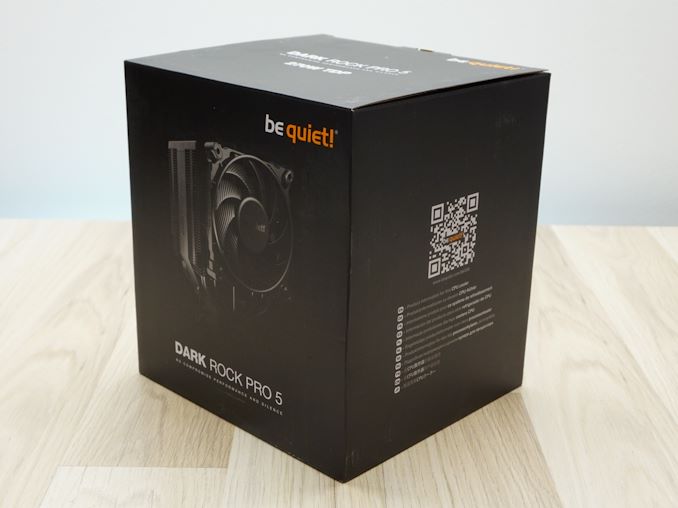
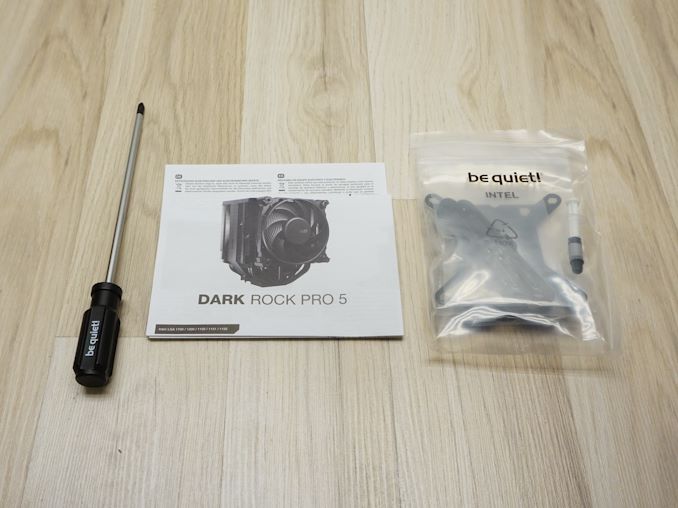

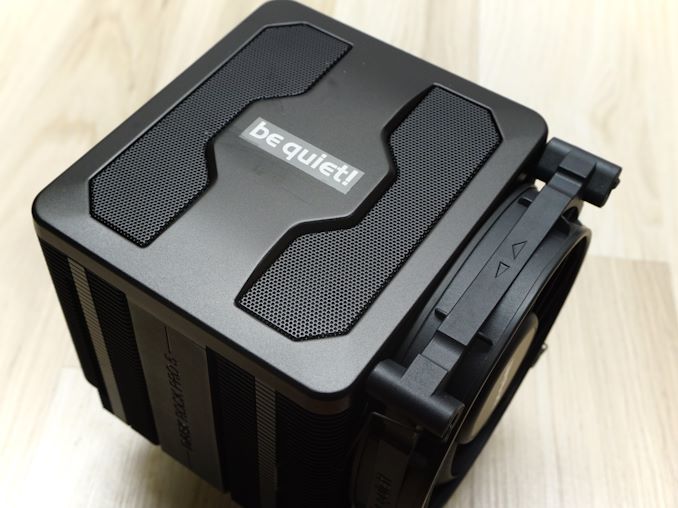
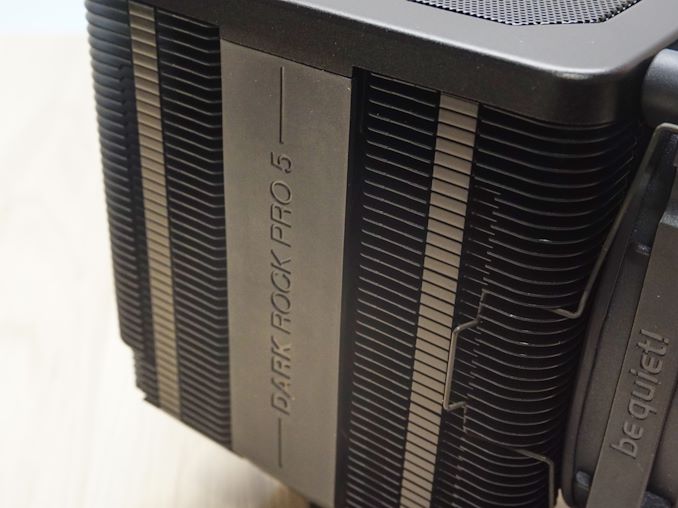
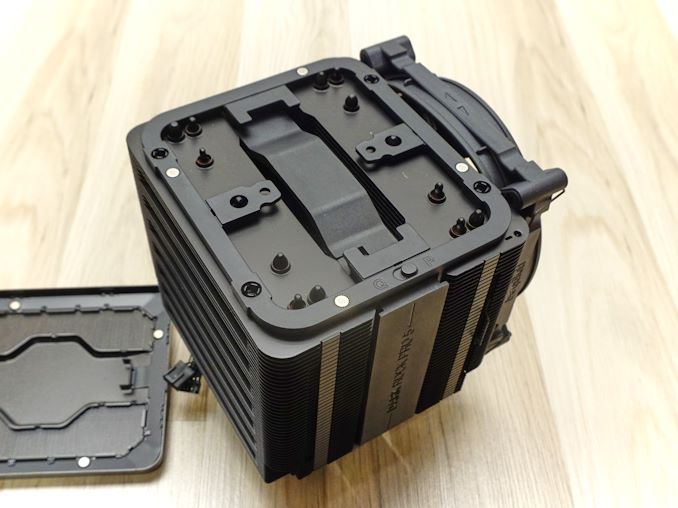

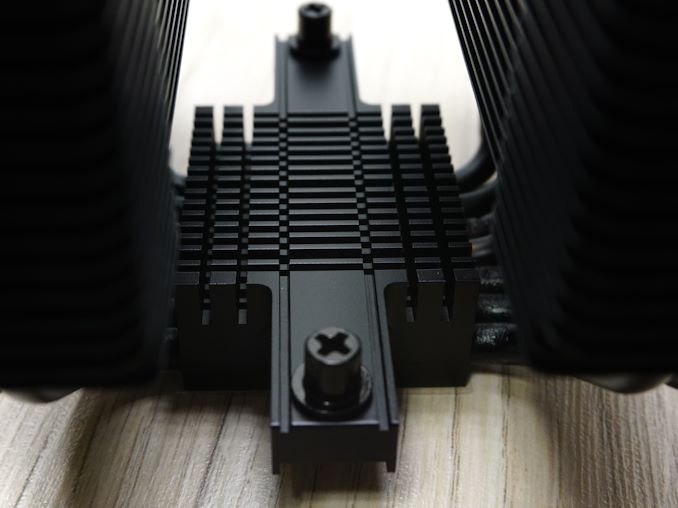
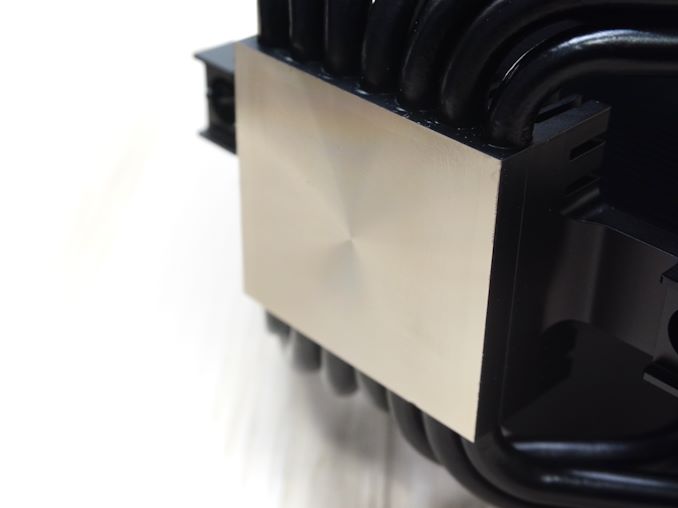

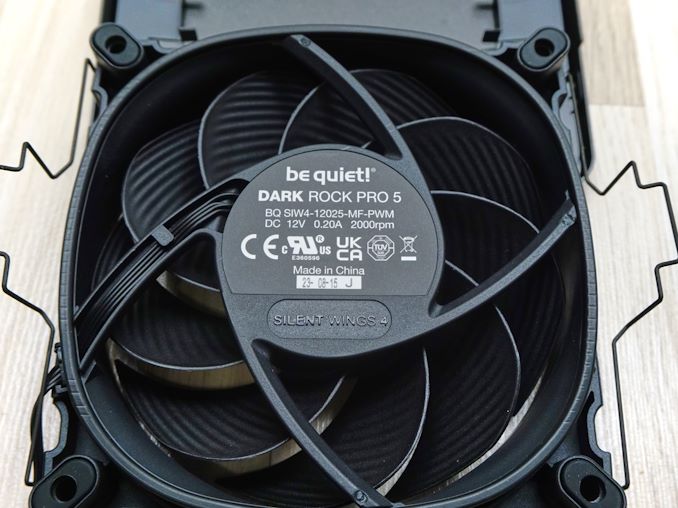








20 Comments
View All Comments
Footman36 - Tuesday, January 16, 2024 - link
Appreciate the review. $80 is still ridiculously expensive for a HSF when you can buy the Thermalright Phantom Spirit for $33 and get similar performance. I would like to see a review of this HSF on Anandtech.PeachNCream - Sunday, January 21, 2024 - link
I get and support where you're coming from. A good condition used laptop can sink you for under $200 (new laptops start at around that price as well though adequate future proofing is more or less a $400 laptop) and for your $80 here you get a single component that doesn't compute anything on its own that you have to be bothered to put together yourself. What a waste! But also, in fairness, that DIY segment is collapsing as we learn we can just use a phone we already own or carry our computer anywhere in the form of a power-efficient and inexpensive laptop so prices relative to inflation have fallen a bit lately so $80 isn't all that bad these days. Still though, I agree with you that it's an utterly stupid venture to go purchasing an overpriced, non-movable desktop PC more than 20 years in to this century and most of the world agrees if you look at sales of hardware.RLees - Sunday, January 21, 2024 - link
Well, perhaps true for your use case -- but you'll pry my fixed gaming PC out of my cold dead hands.Sure I =could= get a laptop with an external GPU but when I looked at that I ended up with a very large laptop with all kinds of luggability issues -- so stayed with my desktop and thin/light laptop solution with no compromises for either use case.
PeachNCream - Sunday, January 21, 2024 - link
Gaming laptop? Those are a huge waste of money and effort as well. There really is no need for a dGPU of any sort if you use a bit of selectivity in the types of things you use your computer for although, I do understand a lot of people don't know any better and are sedentary being a computer screen for a substantial number of hours of their lives. I hope you can find other ways to have fun someday.nubie - Tuesday, January 16, 2024 - link
How does this compare to a budget cooler like the 7-pipe Phantom Spirit? At half the price I am willing to bet it is still swinging. You could upgrade to Noctua fans and still be in the same ballpark for noise and performance. I suppose the looks are "pedestrian", but I don't drive a bro-dozer either.mode_13h - Thursday, January 18, 2024 - link
Thank you for including the Noctua NH-C14S in your testing. Since I like downdraft coolers, I appreciate having more data on it and how it compares to other popular models.krazyfrog - Friday, January 19, 2024 - link
I'm not sure I get the point of an arbitrary 50% value for the low fan speed test when all models are going to be at different RPM and noise levels. What exactly is so special about the 50% value for it to be the normalization constant? Why not noise normalize instead at a steady decibel level?E.Fyll - Saturday, January 20, 2024 - link
Much like you said, it is an arbitrary point, showing the capacity of the cooler at low airflow.We are doing far better than "normalizing" at a single dB level. Instead, we take measurements at several levels and compose the TRvsSPL chart. It shows the capacity of every cooler across its entire operational range and how airflow affects its performance (slope). If I were, for example, to set a "standard" dB level, there would undoubtedly be cases where the cooler would not be able to operate there at all. Check this review's chart for example. If I chose 33 dB(A) as the "normalized level", the Dark Rock Elite would not be able to reach it. If I chose 36 dB(A), the NH-U12S could not reach that. There would be chaos across the reviews. It would be far easier and faster for me to test a single point rather than taking multiple measurements and generating the graph but that is just bad practice.
RLees - Sunday, January 21, 2024 - link
The 1st image on the last page appears to be the Dark Rock Pro 4 cooler, not 5.Correct?
Ryan Smith - Monday, January 22, 2024 - link
No, that is the DRP 5. All of these photos were taken at the same time. (Plus we don't even have a DRP 4)